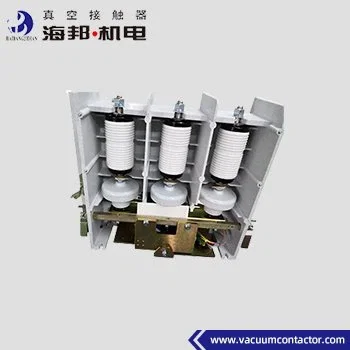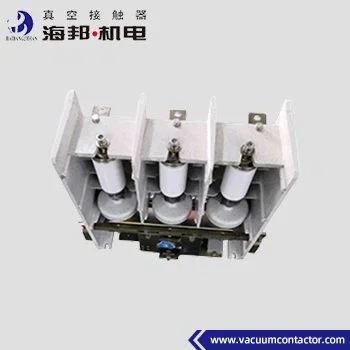Vacuum contactors are essential components in electrical systems, specifically designed to control and switch high voltage circuits. However, like any electrical device, vacuum contactors can sometimes face issues, such as power loss. When a vacuum contactor loses power, it can disrupt the operation of machinery and impact productivity. In this blog, we will provide a troubleshooting guide to help you identify the causes and resolve power loss in vacuum contactors.
Understanding Vacuum Contactors
Before diving into troubleshooting, it's important to have a basic understanding of vacuum contactors. Vacuum contactors are electrical devices used to make or break an electrical circuit. They utilize a vacuum chamber to extinguish the arc generated when the contacts open or close. Vacuum contactors are commonly used in industries such as manufacturing, mining, and power distribution, where high voltage switching is required.
Initial Checks:
When a vacuum contactor loses power, it's crucial to begin with some initial checks:
a. Power Supply: Verify that the power supply to the vacuum contactor is intact. Check for any tripped circuit breakers or blown fuses that may have interrupted the power flow.
b. Control Circuit: Inspect the control circuitry of the vacuum contactor. Look for loose or damaged wiring, faulty relays, or malfunctioning control devices that may prevent the contactor from receiving the necessary signals to operate.
c. Vacuum Integrity: Ensure that the vacuum chamber within the contactor is not compromised. A damaged or leaking vacuum chamber can affect the performance and reliability of the contactor.

Inspecting the Contacts
The contacts of a vacuum contactor are critical for proper electrical conduction. If power loss persists after the initial checks, carefully inspect the contacts for any issues:
a. Contactor Contacts: Examine the main contacts of the vacuum contactor for signs of wear, pitting, or burning. Damaged contacts can lead to poor electrical connection and power loss. If necessary, clean or replace the contacts according to the manufacturer's guidelines.
b. Auxiliary Contacts: Check the status of the auxiliary contacts. These contacts, used for control and signaling purposes, can influence the overall operation of the contactor. Ensure that the auxiliary contacts are properly aligned, free of debris, and engaging as intended.
Thermal Overload and Protection
Vacuum contactors are equipped with thermal overload protection mechanisms to safeguard against overheating. If a vacuum contactor loses power, it could be due to a triggered thermal overload protection device. Follow these steps:
a. Cool Down: Allow the contactor to cool down for a sufficient amount of time. Thermal overload protection devices are designed to automatically reset once the temperature drops to a safe level.
b. Resetting Procedure: If the thermal overload protection device does not reset automatically, consult the manufacturer's documentation to identify the specific reset procedure. Follow the recommended steps to reset the device and restore power to the contactor.

Seeking Professional Assistance
If power loss persists despite the above troubleshooting steps, it may be necessary to seek professional assistance. A qualified electrician or technician with experience in vacuum contactors can provide an in-depth analysis and diagnosis of the issue. They will have access to specialized equipment and knowledge to identify and rectify complex problems.
Conclusion
Power loss in a vacuum contactor can disrupt operations and impact productivity in various industries. By following this troubleshooting guide, you can identify potential causes and resolve power loss issues in vacuum contactors. Remember to start with initial checks, including power supply and control circuit inspections. If the problem persists, inspect the contacts and ensure the thermal overload protection mechanism is functioning correctly. If necessary, consult a professional to diagnose and rectify the issue. By promptly addressing power loss in vacuum contactors, you can minimize downtime and ensure the efficient operation of electrical systems.
Haibang Machinery
haibangshebei@163.com

